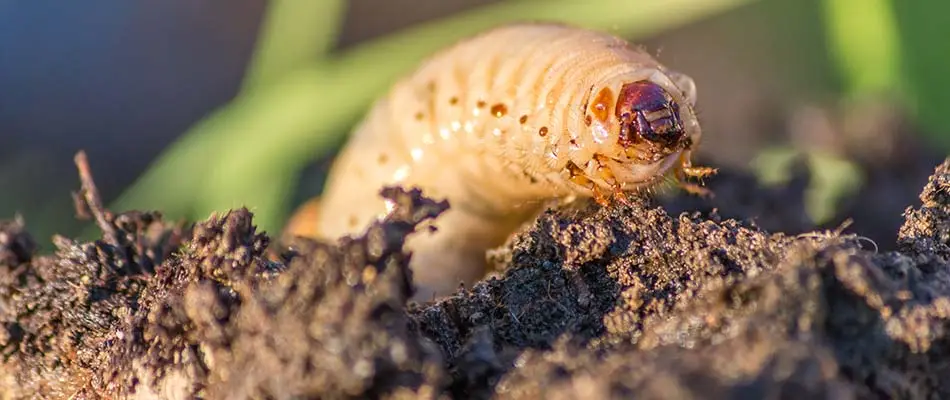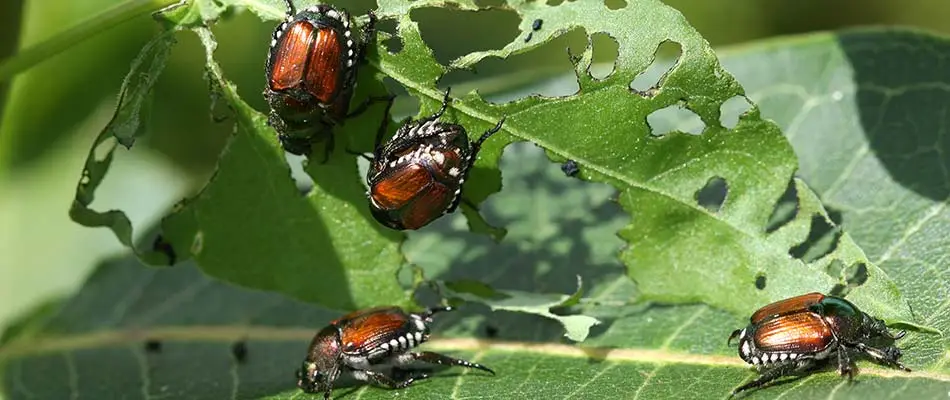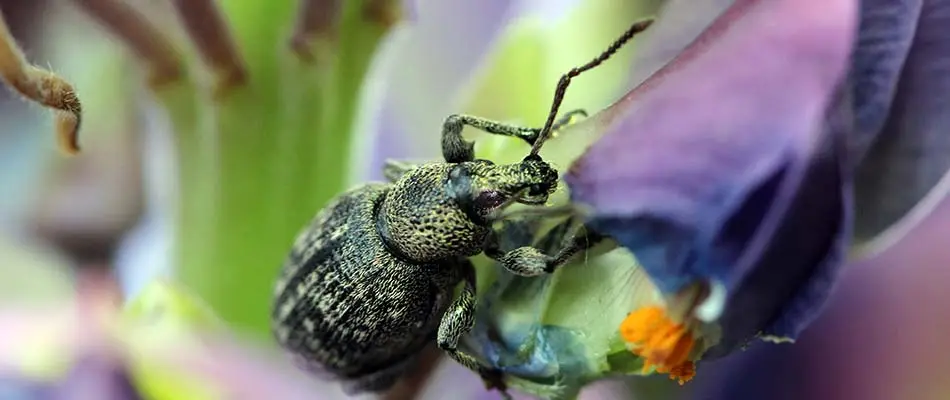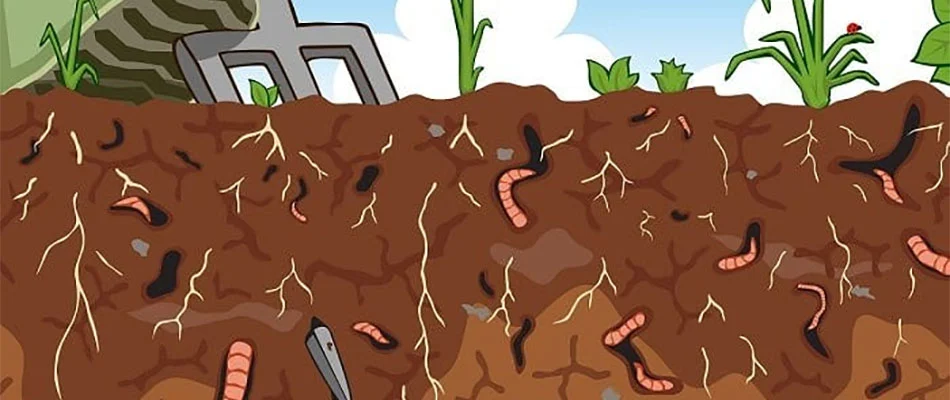When you think about insect pests and threats to your lawn, you probably think of bugs that bite and sting and about weeds.
What many don’t know is that there are insects that may pose no threat at all to people but can cause extensive damage to a lawn. While some of them are visible on grass and leaves, making them easier for an individual to deal with, there are others below the surface capable of causing great harm. Among the worst of them are grubs and billbugs.
Here in western Iowa, lawn pests can be more troublesome than they can be in some other parts of the country. Because our climate is more arid than that in, say, the Pacific Northwest or the Southeast, our watered, fertile lawns become literal oases for insects.
Protecting a lawn from these harmful insects can be a little tricky because you want to get rid of the bad without harming the good or the environment. It can also be tricky because spots damaged by insects might appear like spots suffering from drought or weeds, and the wrong diagnosis can mean the wrong cure.
In this article, we’re going to talk about these pests and what they do, how to identify areas affected by them, and how to use both prevention and eradication to protect the lawn.
Grubs

In our area, white grubs can be a serious problem. The white grub is the larval form of the June beetle. The previous year’s brood goes into its pupal stage in the spring, and the adults emerge and fly in late June. Soon after that starts the mating cycle, and by early July they lay eggs in the soil. Those eggs hatch within a few weeks, and that’s when the trouble begins. The grubs grow rapidly and eat the roots, causing the grass above to die. During the winter, they burrow deeper and hibernate, but they come back hungry the next spring.
Since this is all happening underground, it can be hard to detect until there is visible damage. Another harmful effect of grubs is that they can attract skunks and moles that love to dine on them. That sounds great at first until you realize that those animals have to dig up the lawn to get at their food. And do we need to remind you of what it’s like when a skunk decides to spray?
Japanese Beetles

Japanese beetles don’t eat your grass, but in their larval form, they are grubs living in the soil, causing the same kinds of trouble that white grubs do. These grubs do peak damage in the summer. With Japanese beetles, you also get the dubious “bonus” of the adults eating some types of leaves and flowers (like those lovely roses you planted).
Billbugs (Weevils)

In their adult form, billbugs do eat grass, but they typically do not cause extensive harm. Like June beetles and Japanese beetles, though, they are grubs when in their larval form, and this is when they can cause serious damage. These grubs are legless and white and can reach up to ½” in length (the white grubs of the June beetle are the largest grubs). The younger grubs feed in the crown, the place where the grass meets the soil. Larger ones move lower in the crown and into the root zone.
Indentifying Trouble Spots
To fight back against pests, it’s necessary to know that they’re present. A good visual inspection is a good start. Here are some easily detectable signs that you may have a grub problem:
- Brown or bare patches in the grass
- Patches of dead or dying grass
- Wilted grass
- Damage or disturbances in the crown (digging or burrowing by animals eating insects, for example)
- Loose grass indicating damage to the root system
Because many of the signs of pest damage are the same as signs of damage from lawn disease or drought, a closer inspection is needed. This means literally getting down on the grass and looking closely for insects in the soil.
A do-it-yourself way of finding grubs that is fairly simple to perform is turf removal. Cut out a square foot of turf that is 4-6 inches deep and inspect the soil for grubs. If they’re in there, they’ll be easy to see.
Two ways to find surface grubs such as the larvae of billbugs are flotation and irritation.
For the former, cut both ends out from a paint can or large food can, press the can a few inches into the soil, and fill the can with water. If there are grubs or grass-eating pests like chinch bugs there, they will come floating to the surface, and you will know you may have a problem.
For the latter, mix a gallon of water with a tablespoon of dish detergent (lemon-scented works best) in a container. Pour it onto a suspect spot. The soap suffocates the insects it’s over, so they’ll come to the surface to breathe, and then you’ll see them.
You don’t need to use these methods on random patches of your lawn. Be selective and apply them to areas that are damaged or next to damaged areas.
This does take time and requires you to know what you are doing and what to look for. It might be easier to ask a professional service to perform an inspection. They’ll do it faster, they’ll get it right, and they’ll know exactly what to do from there.
Protecting the Yard
As always, prevention can save a lot of future headaches.
Proper watering, fertilization, and mowing help protect a lawn and deter or manage pests. Healthy lawns are actually more difficult for harmful insects to get a hold in. Aeration, mentioned earlier, also is extremely helpful in maintaining health and controlling pests. Of course, a professional service will make all of this much easier on you.
If possible, plant pest-resistant grasses such as perennial ryegrass and fescue. They carry tiny fungi that repel some species of pests.
Grub Control Insecticides
Prevention is the best defense and can be very effective. It’s almost inevitable that you will deal with grubs at some point. When that happens, the most popular solution is to go with chemical pesticides, which come in both granular and spray applications. They are effective, they are usually easy to use, and they work quickly.
There are also some serious downsides to using chemical pesticides, and even though many people apply pesticides themselves, it’s still recommended to consult with the pros. Consider the following:
- Misapplying or overapplying them can kill things you don’t want to.
- Dangerous chemicals can get into the watershed.
- Pesticides are poisons that kill insects, but they can be harmful or lethal to people, too. You have to make sure others stay away from the chemicals, and you have to make sure they don’t get into your eyes, nose, and mouth.
Quality Professional Service
The best time to go after white grubs is when eggs are beginning to hatch, and the best time to go after billbugs is when they are adults and visibly present. Sound like a pain to keep up with? Prefer for someone else to deal with all of this? We’re here!
Sharp Lawn Care has different levels of packages including grub control, weed control, and fertilizing. We also have an eco-friendly whole-yard insecticide treatment that targets both the pests that harm your lawn and the ones that harm you. We’ll do it properly, and we’ll do it safely so that you don’t have to worry about doing it wrong or exposing you and your loved ones to risk.
Contact us to get a grub control quote today!




Comments (0)
Thanks for your comment!
Thanks for your feedback! Your comments have been successfully submitted! Please note, all comments require admin approval prior to display.
Error submitting comment!
There is a problem with your comment, please see below and try again.